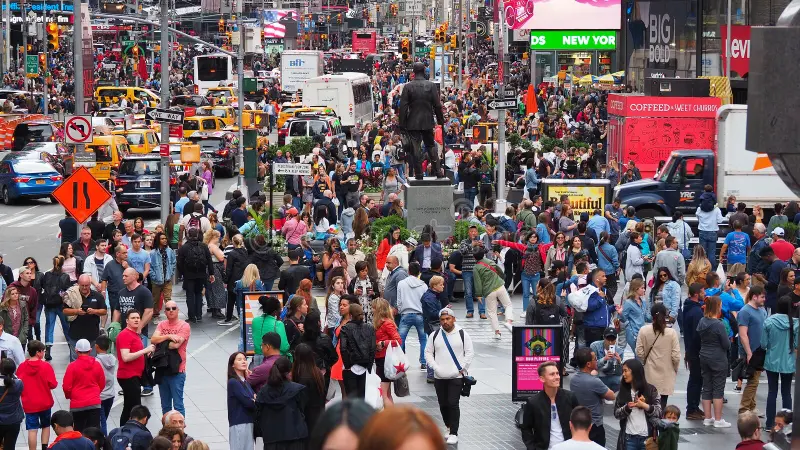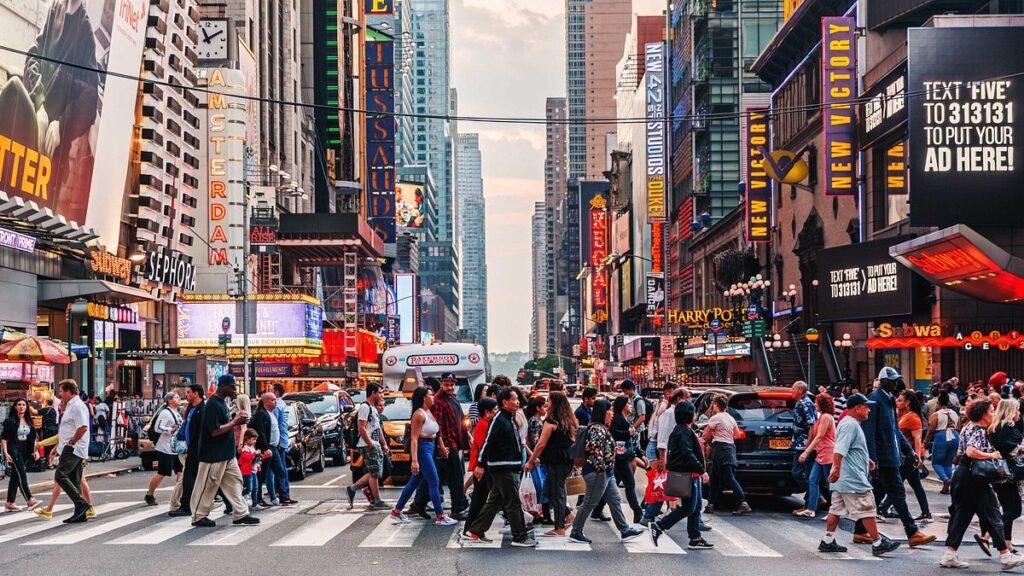Have you ever bumped into someone at a coffee shop halfway across the world, only to discover they went to college with your cousin? Or found out that your new coworker’s best friend is married to your old roommate’s brother? These moments feel like cosmic coincidences, but they might actually be evidence of one of the most fascinating theories about human connection: six degrees of separation.
What Is Six Degrees of Separation?
The idea is deceptively simple. According to the theory, any two people on Earth are connected by a chain of no more than six intermediary relationships. In other words, you’re linked to the President, a sheep farmer in New Zealand, or a street vendor in Mumbai through six or fewer mutual acquaintances.
It sounds almost too neat to be true. How could you possibly be that close to everyone on the planet? But the math behind it is surprisingly solid, and the social experiments that have tested it are even more intriguing.

Where Did This Theory Come From?
The concept has its roots in a 1929 short story by Hungarian author Frigyes Karinthy called “Chains.” In it, characters challenge each other to find the shortest chain of acquaintances connecting them to any random person on Earth. Karinthy proposed that the maximum would be five intermediaries.
But the theory didn’t gain serious scientific attention until 1967, when American sociologist Stanley Milgram conducted his famous “small world experiment.” Milgram asked random people in Kansas and Nebraska to get a package to a specific stockbroker in Boston. The catch? They could only send it to someone they knew on a first-name basis, who would then pass it along to someone they knew, and so on.
Milgram found that packages that reached their destination did so in an average of six steps. Six degrees. The phrase was born.
The Science Behind the Connection
At first glance, six degrees seems impossible. Think about it: you might know a few hundred people personally. If each of them knows a few hundred people, and those people each know a few hundred more, the numbers explode exponentially. By the sixth degree, you’re theoretically connected to billions of people.
This is the power of exponential growth in networks. In a world of eight billion people, it doesn’t take many links to reach across continents, cultures, and communities. Every person you know is a bridge to entire networks you’ve never encountered.
Mathematicians and network scientists have since confirmed that many real-world networks, from the internet to social connections, follow this “small world” pattern. They’re characterized by clusters of tight-knit groups with a few key connectors who link different clusters together. These connectors—the people who seem to know everyone—are the shortcuts that make six degrees possible.
Testing the Theory in the Digital Age
In the early 2000s, researchers had a new laboratory to test six degrees: the internet. In 2011, Facebook conducted a massive study examining the connections between its users. At the time, the platform had around 721 million active users, representing about 10% of the global population.
The result? The average number of connections between any two Facebook users was 4.74 degrees. Not six—less than five. In 2016, Facebook ran the study again with 1.6 billion users and found the number had dropped to 3.57 degrees.
The digital age hasn’t just confirmed six degrees of separation; it’s shrunk the distance between us. Social media, global travel, and instant communication have tightened the web that connects humanity.
The Six Degrees Phenomenon in Pop Culture
The theory leaked into popular culture in fascinating ways. The most famous example is the “Six Degrees of Kevin Bacon” game that emerged in the 1990s. The premise is simple: connect any Hollywood actor to Kevin Bacon through their film roles in six steps or fewer.
It started as a joke among college students but became so widespread that Bacon himself embraced it, eventually turning it into a charitable platform. The game works because Hollywood, like most social networks, follows the small world pattern. A few highly connected actors (those who work on tons of films) serve as hubs linking the entire industry together.
What Does It Really Mean?
Six degrees of separation isn’t just a quirky fact to pull out at parties. It has profound implications for how we think about society, disease spread, information flow, and human potential.
During the COVID-19 pandemic, epidemiologists relied on network theory to model how quickly the virus could spread through connected populations. The same principles apply to ideas, innovations, and social movements. A single person with the right connections can spark changes that ripple across the globe in surprisingly few steps.
It also changes how we think about opportunity and influence. That stranger you help today, or the connection you make at a conference, could be a bridge to someone who changes your life. The theory suggests that we’re all closer to resources, knowledge, and opportunities than we think—if we know how to navigate the network.
The Limits and Criticisms
Of course, six degrees isn’t a perfect model. Milgram’s original experiment had significant flaws. Many packages never reached their destination, and critics argue that the people who participated were already somewhat connected by geography and socioeconomic status.
The theory also doesn’t account for real barriers that divide humanity: language, wealth, geography, culture. You might technically be six handshakes away from a billionaire CEO or a celebrity, but the social distance between you is far greater than the numerical distance suggests. Not all connections are equal, and not all networks are equally accessible.
There’s also the question of what it means to “know” someone. In Milgram’s experiment, it was defined as first-name basis. Today, with thousands of social media connections, the definition has blurred. Are you really connected to everyone in your LinkedIn network? Does a casual acquaintance count the same as a close friend?

We’re All Closer Than We Think
Despite its limitations, six degrees of separation reveals something profound about human society. We live in an incredibly interconnected world, far more so than our day-to-day experience suggests. The stranger on the subway might be your neighbor’s old colleague. The person commenting on a Reddit thread might be your future business partner’s cousin.
This interconnectedness is both humbling and empowering. It reminds us that our actions ripple outward in ways we can’t predict, that kindness can travel farther than we imagine, and that we’re all part of a vast, invisible web that connects humanity.
Next time you meet someone new, consider this: somewhere in the chain between you and them are just a handful of people. Maybe four, maybe five, maybe six. But not many more than that. In a world that often feels impossibly large and divided, six degrees of separation suggests we’re all neighbors, whether we know it or not.
You're closer to everyone on Earth than you think—and the science proves it
Six degrees of separation currently tops our rank of the most fascinating theories about human connection, beating even more complex network models and social theories.
So unsurprisingly, this is an absolutely fantastic concept. The framework hasn't changed massively since Milgram's original experiments, but our understanding and the supporting evidence have been substantially upgraded through modern digital research. This is what we call a big boost in validating a classic theory.


